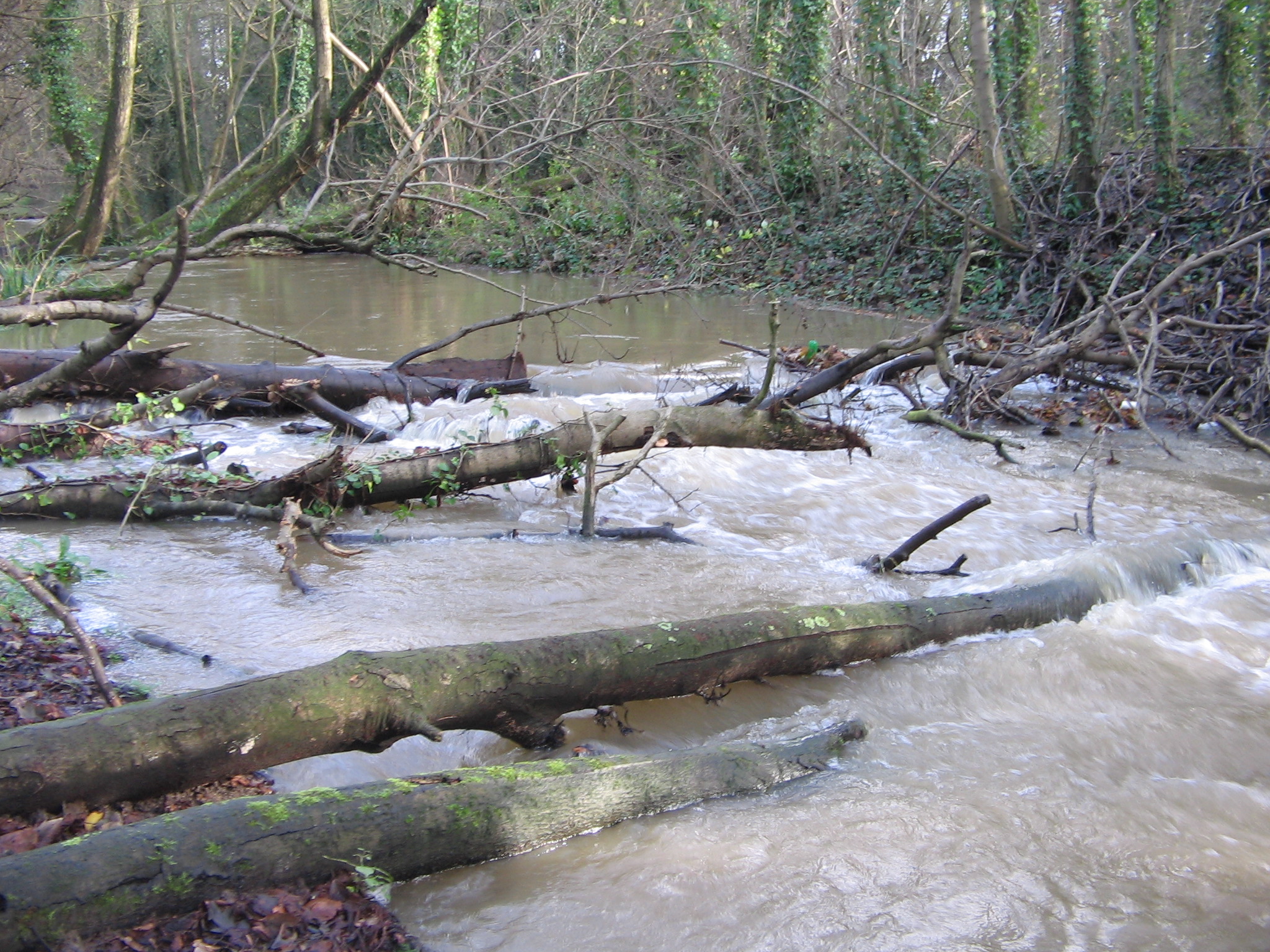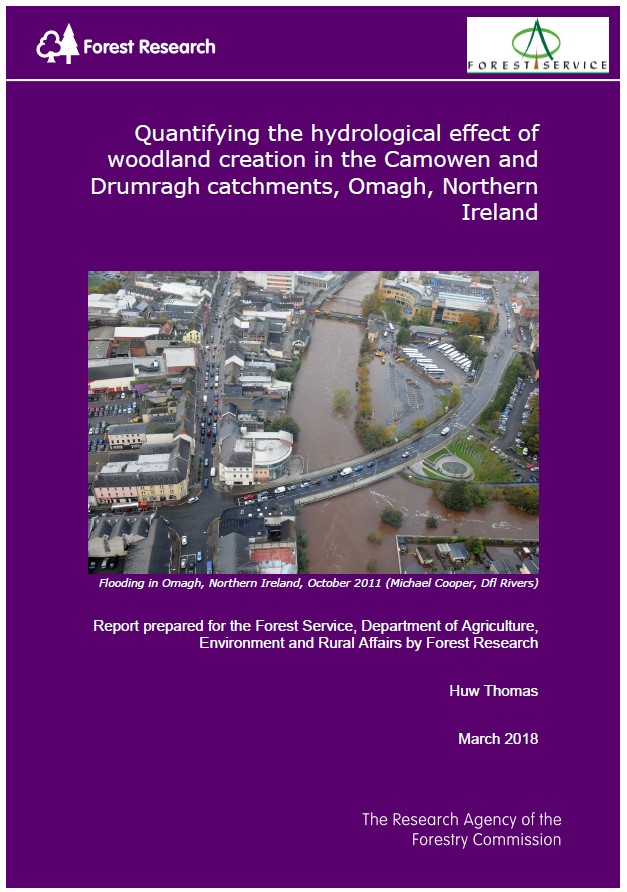Quantifying the hydrological effect of woodland creation in the Camowen and Drumragh catchments, Omagh, Northern Ireland
Lead Author: Huw Thomas
We use some essential cookies to make this website work.
We’d like to set additional cookies to understand how you use forestresearch.gov.uk, remember your settings and improve our services.
We also use cookies set by other sites to help us deliver content from their services.
Lead Author: Huw Thomas

The ‘Runoff Curve Number’ rainfall-runoff model, developed by the USDA Soil Conservation Service, was applied to the catchments draining to Omagh, to assess the potential effect of woodland creation on flood flows.
The ‘Runoff Curve Number’ method provides a potentially powerful tool for evaluating the impact of land use change and management on surface runoff, as well as for identifying areas where the catchment such measures could be most effective.
Modelled runoff maps were created for the different land use scenarios (including increasing woodland cover to 13.8% of the catchment) to identify priority areas for woodland creation in the catchment. The need for better management of existing priority habitats to reduce runoff was also identified.
The predicted potential reductions in flood peak lie within the range of values generated by other modelling studies and therefore add to the growing body of evidence that woodland creation and management can have a significant role in flood risk management.
Report prepared for the NI Forest Service, Department of Agriculture, Environment and Rural Affairs
Cookies are files saved on your phone, tablet or computer when you visit a website.
We use cookies to store information about how you use the dwi.gov.uk website, such as the pages you visit.
Find out more about cookies on forestresearch.gov.uk
We use 3 types of cookie. You can choose which cookies you're happy for us to use.
These essential cookies do things like remember your progress through a form. They always need to be on.
We use Google Analytics to measure how you use the website so we can improve it based on user needs. Google Analytics sets cookies that store anonymised information about: how you got to the site the pages you visit on forestresearch.gov.uk and how long you spend on each page what you click on while you're visiting the site
Some forestresearch.gov.uk pages may contain content from other sites, like YouTube or Flickr, which may set their own cookies. These sites are sometimes called ‘third party’ services. This tells us how many people are seeing the content and whether it’s useful.
